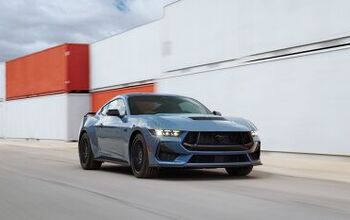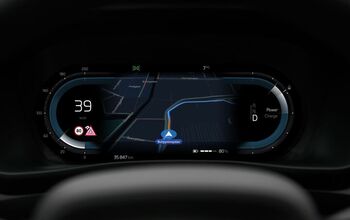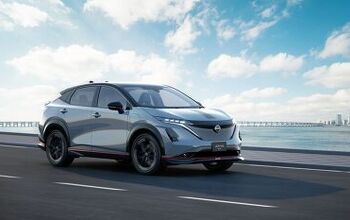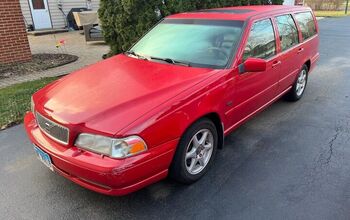Swedish Company's Camshaft-free Piston Engine Already Has a Customer

A Swedish company with close ties to a hard-to-spell supercar maker has thrown a wrench into the automotive world, unveiling a production-ready piston engine that doesn’t use a camshaft.
Developed by FreeValve AB, which isn’t a Nordic Lynyrd Skynyrd cover band, the new engine technology ditches a camshaft for other modes of valve actuation, gaining power and efficiency in the process. Unlike some other touted internal combustion engine advancements, this technology already has a customer.
FreeValve’s invention was revealed by the Koenigsegg sister company earlier this year in Beijing, but we didn’t learn much about its efficiency or applications. Now, the technology appears ready for mass production, with a customer ready to test it. The company recently debuted a driveable vehicle equipped with a production-ready FreeValve engine at the Guangzhou Auto Show.
Chinese automaker Qoros plans to test a fleet of vehicles equipped with a 1.6-liter FreeValve engine, which it dubs the “QamFree” motor. The motor uses pneumatic-hydraulic-electronic actuators instead of a camshaft to control valve movement.
“This results is [sic] much more precise and completely customizable control over valve duration and lift, on both the intake and exhaust sides,” Koenigsegg stated in a press release. “This represents a 47% increase in power, a 45% increase in torque and a 15% reduction in fuel consumption when compared to a traditional camshaft engine with similar specifications.”
Qoros plans to refine the technology before using it in a future production model.
Making a reported 230 horsepower and 236 pounds-feet of torque, the 1.6-liter engine is smaller and lighter than a comparable ICE, with lower production costs. Naturally, the technology could appear in future Koenigsegg vehicles. There’s a chance that other automakers, looking to satisfy both environmental regulators and customers, could tap the technology for efficiency and performance gains. Of course, that’s assuming the Qoros tests go smoothly and the automaker adopts the technology.
Certainly, Christian von Koenigsegg, CEO of Koenigsegg Automotive AB and chairman of FreeValve, wants other automakers to bite. The executive claims the technology could go a long ways towards reducing greenhouse gases by the world’s fleet.
“This will be boosted with the eventual widespread adoption of FreeValve technology in the automotive industry,” he said in a statement.
[Image: Koenigsegg Automotive AB]

More by Steph Willems
Latest Car Reviews
Read moreLatest Product Reviews
Read moreRecent Comments
- SCE to AUX Norway is in Europe, and Tesla is an American automaker - no problems there.I wouldn't use Ford as the bellwether.https://www.reuters.com/business/autos-transportation/tesla-extends-lead-norway-evs-take-record-82-market-share-2024-01-02/https://elbil.no/english/norwegian-ev-policy/
- Steve Biro If the U.S. government wants to talk about banning all connected cars - or at least the collection and sharing of information from said vehicles - I’m all ears. Otherwise, don’t waste my time.
- Ajla Both parties are in favor of banning Chinese vehicles so I don't see how it won't happen in the next year.
- Add Lightness I don't waste a lot of time watching nothing much happening by watching the YouTube 6 minute highlights.
- MrIcky from my rental fleet experience, id rather drive one of these than a camry.


































Comments
Join the conversation
I interviewed Christian Von Koenigsegg sometime around 2009 in his lair/bunker/HQ in Sweden (I think it was in Angelsholm, but not bothered to search it). He showed me the early prototypes of these valves, how they'd reduced the size of each unit over successive generations. The tech was already being tested in an old Saab 900, which I hammered around the test track. I mentioned this only as a pointer to how long this has been in dev, it's not something that they just dreamed up in July. I always remembered checking it out and wondered if it would, one day, make it to market. I reckon it's the real deal and actually could result in something close to the quoted savings.
Should make for some interesting failures on interference engines... Instead of the reliability being in a timing mechanism (very reliable*, particularly if maintained on schedule), you're relying on 8+ individual actuators... *unless you're the tensioner on a BMW 1.6l petrol engine, which grenaded on me @60k miles writing the car off. BMW told me it was a known fault, and that the previous owner had had the "remedial work" completed, thus they were morally exonerated. c0cks. But I'm totally over it.